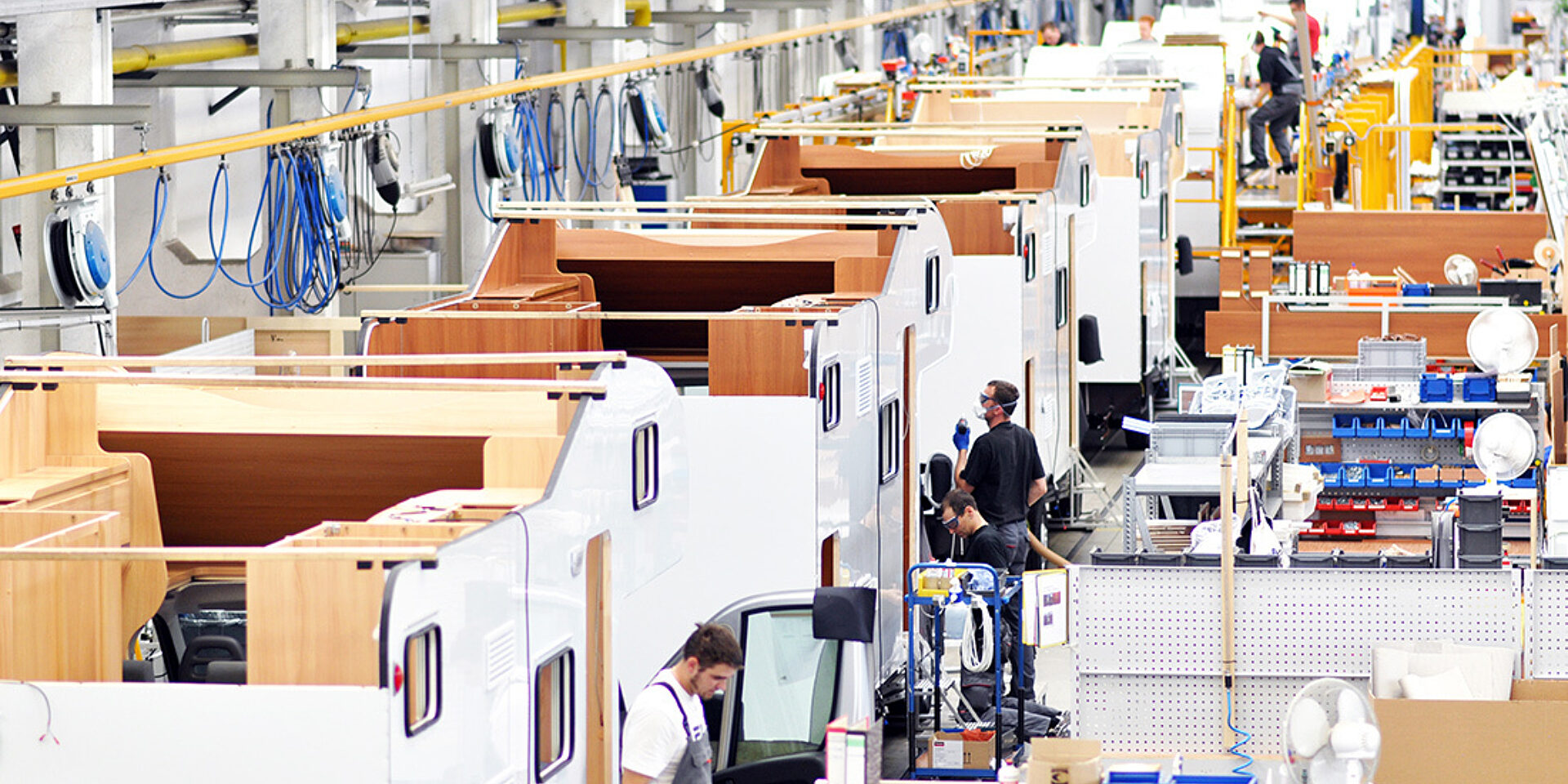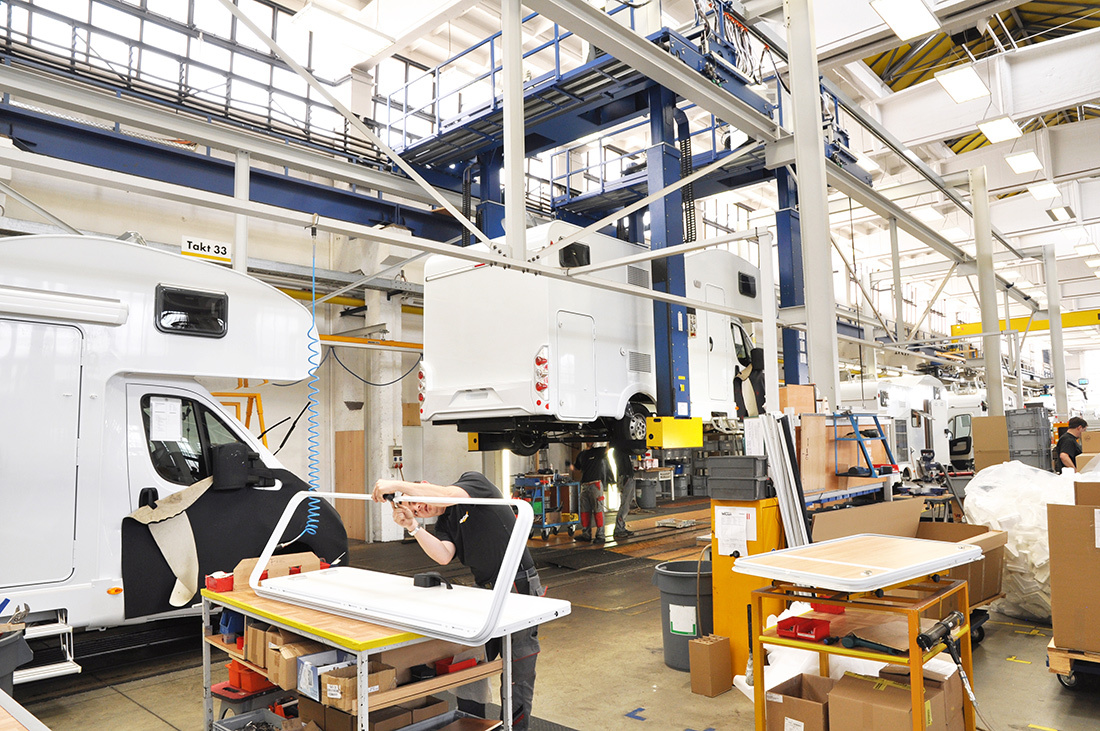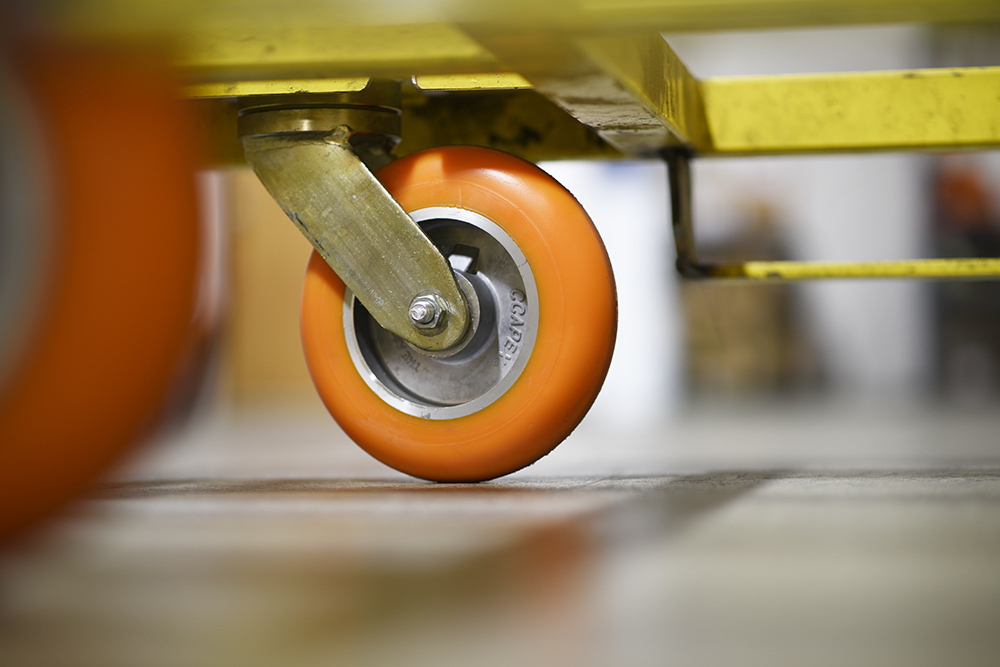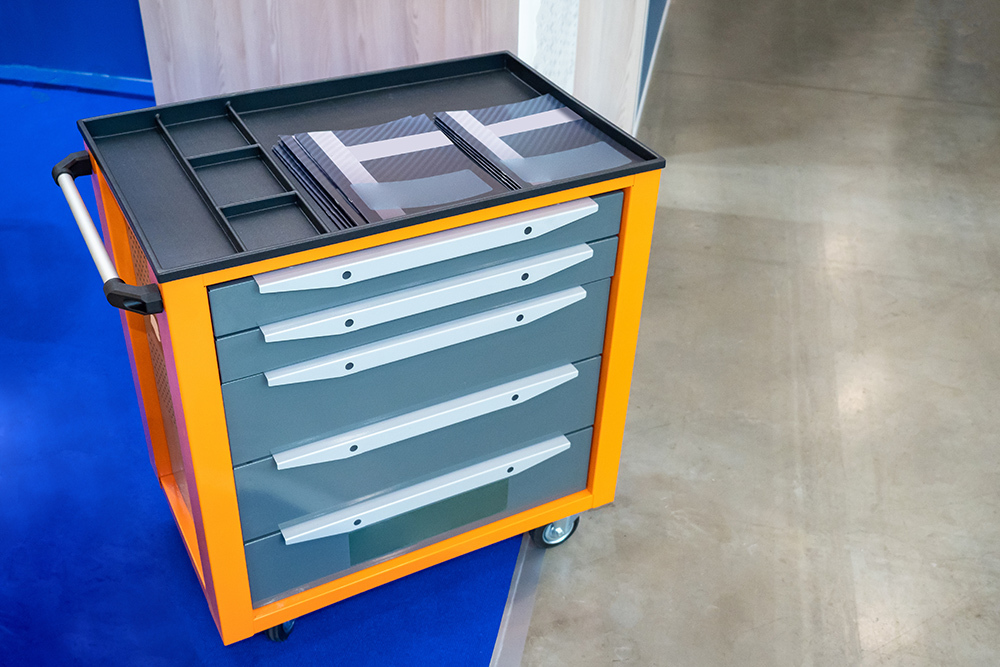Choosing the Right Equipment for Your RV Assembly Line

Building recreational vehicles is complex. From chassis prep and framing to interior installs and final inspection, every station on the RV assembly line needs to be efficient, safe, and adaptable. And while RV manufacturers often focus on high-level production flow, the equipment at each workstation plays a major role in achieving daily output and long-term quality targets.

Whether you're planning a new line or updating your current layout, choosing the right equipment helps you improve ergonomics, reduce injuries, and keep production moving without interruption. Below are five key categories to consider when equipping your RV assembly line.
Adjustable Workbenches and Mobile Stations

Fixed-height benches may work for some repetitive tasks, but RV assembly often involves a wide range of motions and component sizes. Adjustable workbenches allow technicians to fine-tune their setup for comfort and access. This is especially valuable in areas where workers shift between installing cabinets, wiring electrical systems, or prepping seating modules.
Look for benches with:
-
Height adjustability (manual or powered)
-
Lockable casters for mobility
-
Integrated power strips and tool storage
-
Heavy-duty surfaces that resist impact and solvent exposure
Adding flexibility at the station level improves ergonomics and gives your team the freedom to optimize how they work.
Lift-Assist Devices

Many RV components are awkward, heavy, or both. Slide-outs, appliances, mattresses, and galley units often require more than one person to maneuver safely. Lift-assist tools make these tasks safer and faster.
Popular options include:
-
Pneumatic or hydraulic lift tables
-
Overhead hoists and articulating arms
-
Spring-loaded or counterbalance lift carts
By reducing the strain of lifting and positioning parts, these devices protect your workforce and prevent damage to high-cost components. They also allow one worker to complete tasks that might otherwise require a second set of hands, improving labor efficiency without increasing headcount.
High-Quality Carts and Casters

Material handling is constant in RV production. Carts move furniture, wall panels, subassemblies, and tools from one end of the plant to the other. But if the wheels underneath those carts are underperforming, everything slows down.
The right caster setup can dramatically improve safety and efficiency. Polyurethane wheels, especially those with aluminum cores and slightly crowned tread profiles, offer a balance of quiet rolling, floor protection, and reduced push force. Kingpinless rigs are often preferred in industrial settings for their resistance to shock and lateral stress.
Key cart considerations include:
-
Caster diameter (typically 5 to 8 inches for industrial carts)
-
Load rating appropriate for the weight of each cart’s contents
-
Braking systems to keep carts stationary during loading or install
-
Swivel locks for directional control when moving through long aisles
Many manufacturers are now standardizing caster configurations across departments to reduce maintenance and improve part replacement efficiency.
Smart Tool Storage and Shadow Boards

Time lost searching for tools adds up quickly on a moving line. Equipping each station with organized, labeled storage reduces that friction. Shadow boards with outlined silhouettes for every tool make it easy to verify that everything is in place. Integrated drawer systems, magnetic strips, and vertical peg layouts all contribute to a cleaner and more efficient work area.
These solutions:
-
Cut down on tool loss and damage
-
Improve accountability at shared stations
-
Help support 5S and lean manufacturing initiatives
They also reinforce safety, particularly in areas where loose tools could fall into sensitive components or create tripping hazards.
Mobile Power and Compressed Air Access

RV production often requires drilling, sealing, and fastening in tight quarters or within the frame of the vehicle. Relying on static air lines or power outlets can slow progress and limit station layout flexibility. Mobile power carts and retractable air reels give your team the reach and access they need without constant repositioning.
Look for equipment with:
-
Integrated circuit protection and tool charging docks
-
Heavy-duty reels that retract smoothly and resist tangling
-
Cord and hose management features that reduce trip hazards
Well-managed utility access makes every step smoother, especially in final assembly and inspection stages.
Equip Your Line for Efficiency Today
The right equipment improves task efficiency while also strengthening safety, consistency, and overall output.
Investing in adjustable workstations, smart material handling, and ergonomic casters may seem like small steps, but together, they drive major improvements in output and employee satisfaction.
If you’re looking to upgrade your carts or need help selecting the right caster solution for a specific application, Caster Connection can help. Our team works directly with RV manufacturers to spec caster configurations that reduce push force, protect floors, and extend equipment life.
Reach out today to schedule a Caster Needs Eval or learn more about how the right wheels can transform your line performance.
